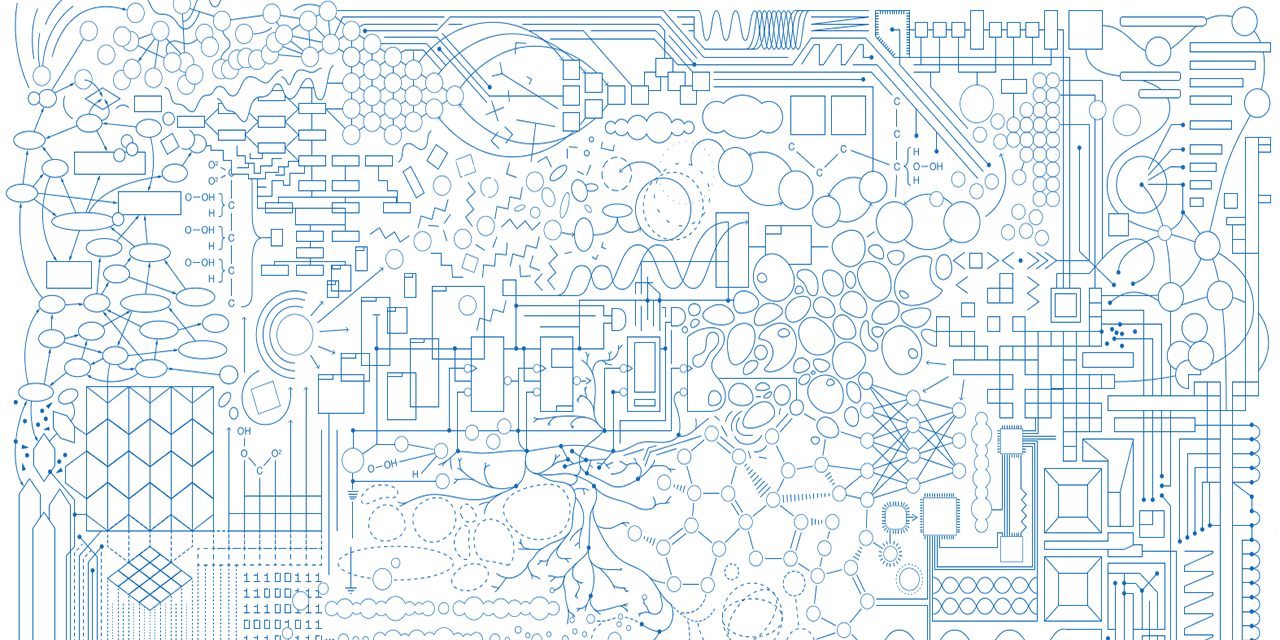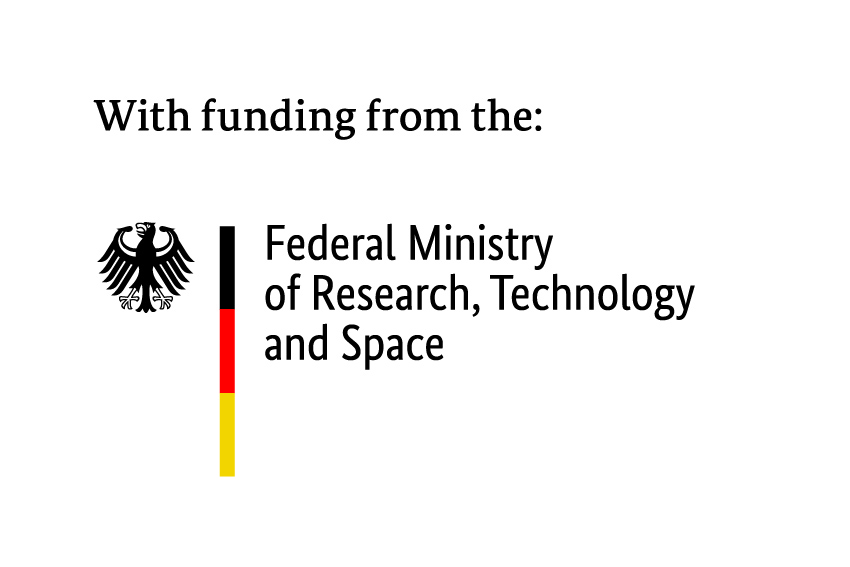An-Archaeology and Spectral Realism with Hilan Bensusan at c:o/re (June 14)
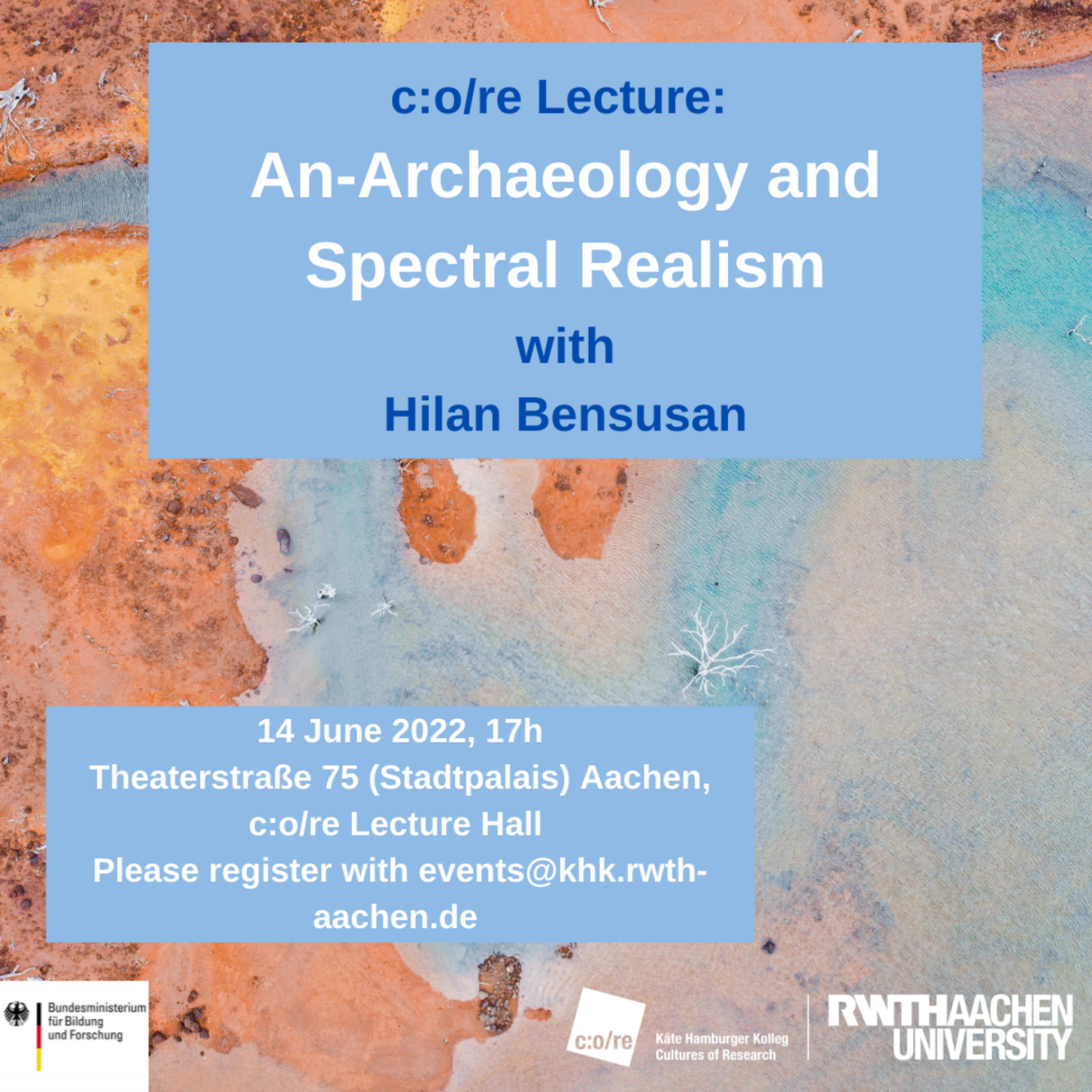
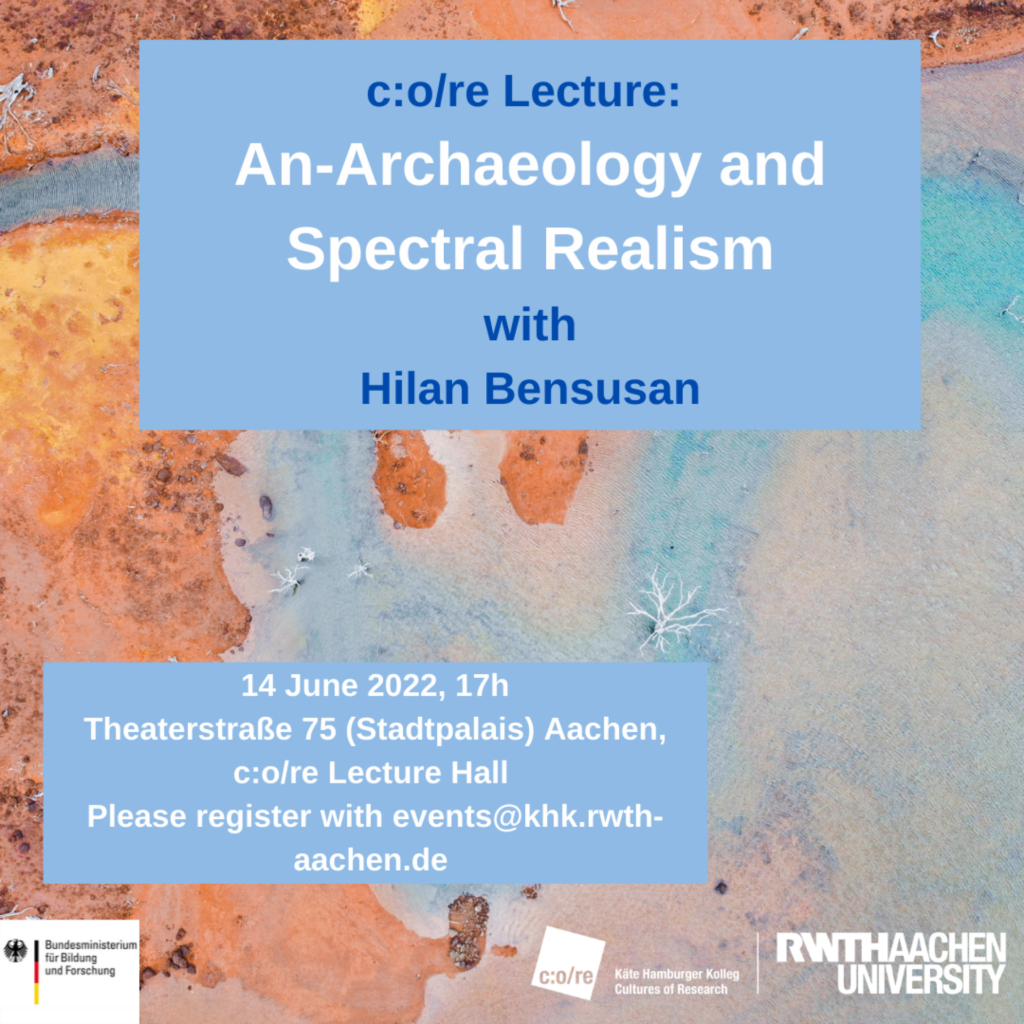
As an introduction to this week’s workshop on Art’s Realism, organized by Amanda Boetzkes at c:o/re, on June 14th at 17:00 Professor Hilan Bensusan gave a lecture on An-archaeology and spectral realism. The manuscript of the talk can be found here.
Hilan Bensusan is Professor of Contemporary Philosophy at the University of Brasilia. He is the author of Indexicalism: Realism and the Metaphysics of Paradox (Edinburgh University Press, 2021) and Being Up for Grabs: On Speculative Anarcheology (Open Humanities Press, 2016). He also published Portuguese: A diáspora da agência – Ensaio sobre o horizonte das monadologias (The diaspora of agency – Essay on the horizon of monadologies) (EdUFBA, 2018), Linhas de animismo futuro (Lines of future animism) (Mil Saberes, 2017), Heráclito – Exercícios de Anarqueologia (Heraclitus – Exercises in anarcheology) (Ideias e Letras, 2012) and Excessos e Exceções (Excesses and exceptions) (Ideias e Letras, 2008).
Engineering Practices Workshop: The Use of Networks in the Humanities and Social Sciences
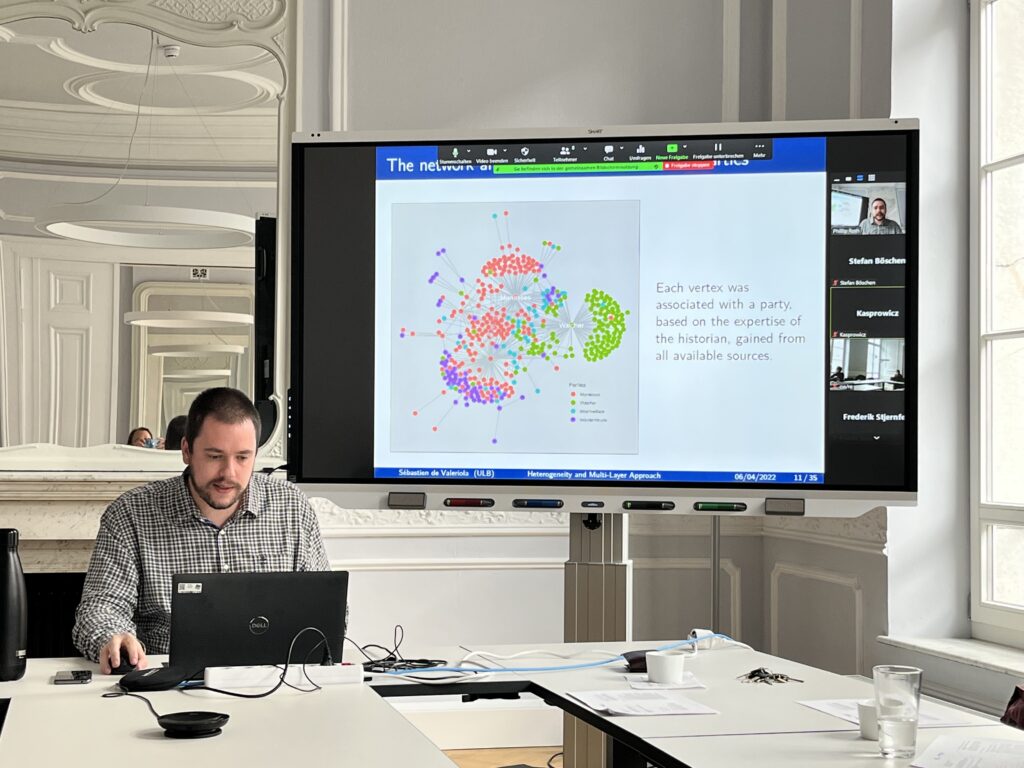
Middle Ages: A Multi-Layer Network Approach”
On May 30th – June 1st, c:o/re hosted the workshop The Use of Networks in the Humanities and Social Sciences, part of the Engineering Practices series and organized by Professor Ana Bazzan together with Phillip H. Roth and Alin Olteanu.
The aim of the workshop was to chart the use of networks in the humanities and social sciences and the consequences of the use of such epistemic tools for the way we understand science, society and the world. As such, the event gathered a variety of perspectives on networks and applications of network analysis, from the mathematics of networks to media analysis, historical research and to tackling questions on technology.
A point of convergence among these varied approaches is that, as models, networks have become a central epistemological tool in many sciences as well as vernacularly, not least because of the mainstreaming of social media and their role in networking communities and academic disciplines across previously established boundaries. A particularly interesting takeaway point of this workshop is that, as models and as representations, networks have become a common analytical tool in many fields of research, thus allowing for multi-perspective discussions on methodology.
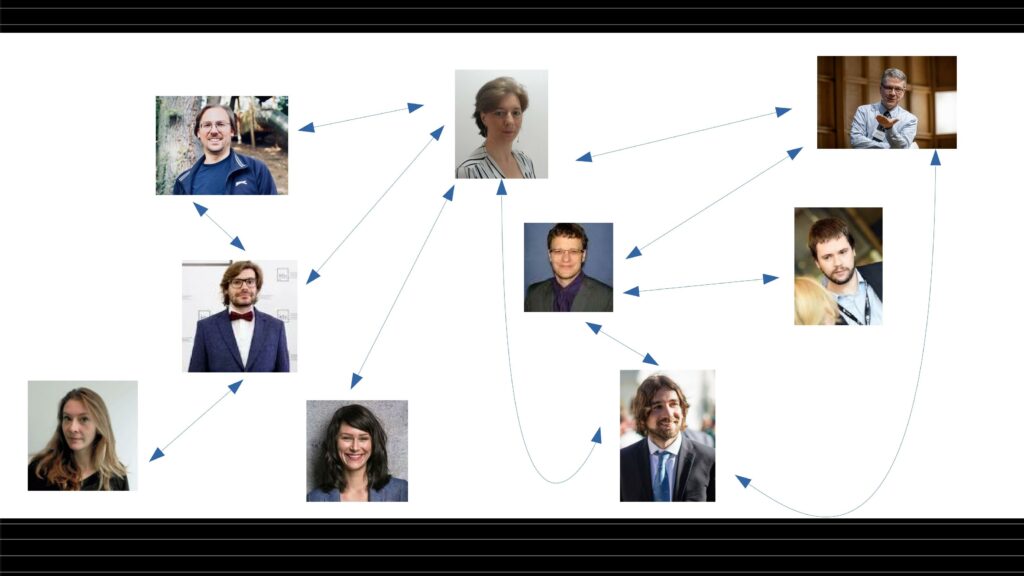
The language of thought: still a salient issue
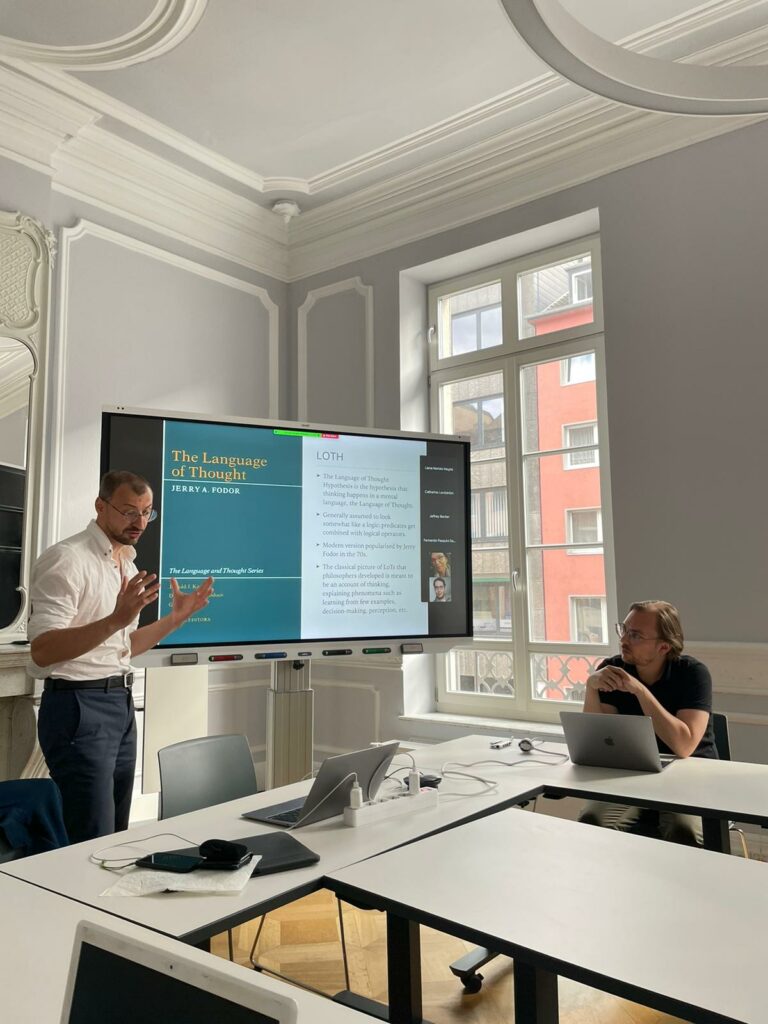
Part of the Philosophy of AI: Optimistic and Pessimistic View lecture series, on 25.05.2022 Jakub Szymanik gave a lecture at c:o/re on Reverse–engineering the language of thought, problematising thought and computation by exploring the cognitive scientific notion of language of thought (“mentalese”). This concept, positing that humans think through logical predicates combined through logical operators, originates in Jerry A. Fodor’s celebrated book (1975), explicitly titled Language of thought. In effort to reverse-engineer the language of thought, Jakub Szymanik considered some recent computation theories, such as inspired from Jerome Feldman and neural networks in a fresh manner.
Jakub Szymanik explained that the notion of language of thought is not easy to avoid: it is often the engine underpinning theories of cognitive models, via notions of complexity and simplicity. The investigation leads to a broad variety of theoretical implications and empirical insights, among which there can be many contradictions. However, apparently divergent approaches at play here, such as, for example, symbolism and enactivism are not necessarily and entirely irreconcilable. The way forward is through pragmatically pursuing the epistemological unification of such theories, as guided by empirical insight.
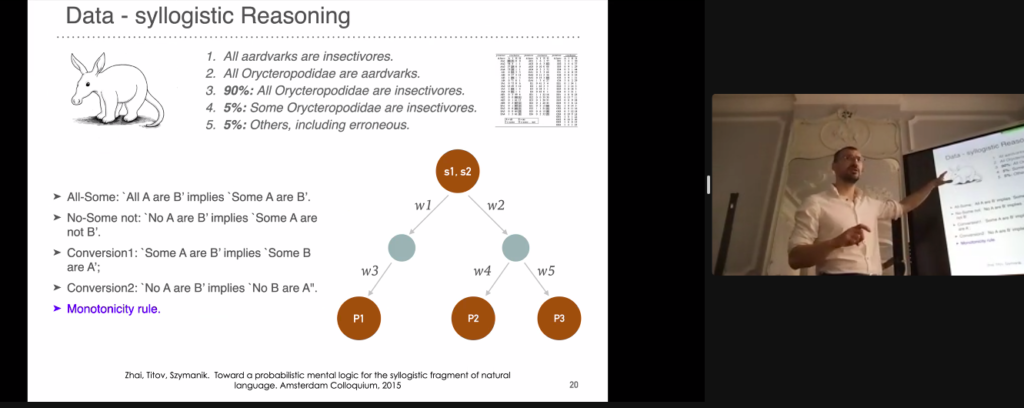
Book launch: The world’s first full press freedom
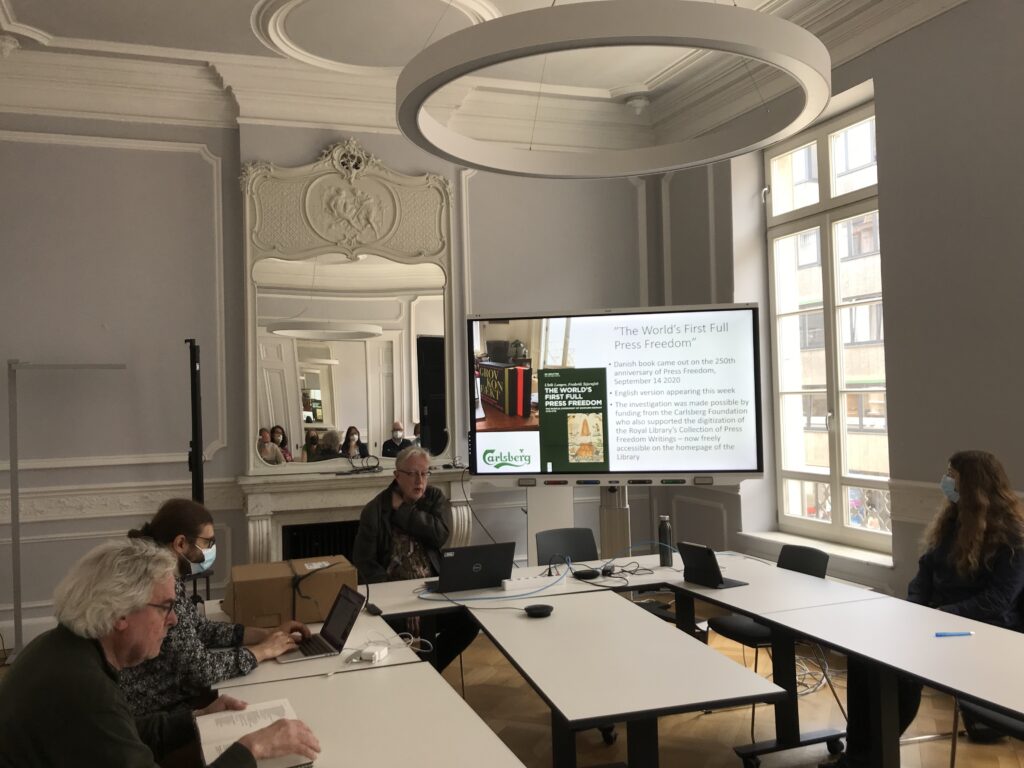
We had a book launch at c:o/re, as Ulrik Langen and Frederik Stjernfelt‘s book The World’s First Full Press Freedom: The Radical Experiment of Denmark-Norway 1770-1773 is being published this week. Frederik Stjernfelt gave a thorough presentation of the book on 25.05.2022. This was a particularly appropriate date for a discussion on press freedom as, on the same day, in Aachen, there took place the ceremony of conferring the International Charlemagne Prize to the leading Belarusian political activists Maria Kalesnikava, Sviatlana Tsikhanouskaya and Veronica Tsepkalo, who lead the fight for democracy in Belarus.
This is an adaptation for international audiences of their previous book written in Danish, also together with Henrik Horstbøll, comprising two volumes, Grov Konfækt. Tre vilde år med trykkefrihed, 1770-73. To address an international audience, Ulrik Lange and Frederik Stjernfelt both reduced the size of the initial text and, also, approached some new topics, to do with the international reactions to the episode of the history of Denmark-Norway (The Oldenburg Monarchy) that the book discusses.
The book offers a historical investigation of the interesting episode in the history of Denmark-Norway when Press Freedom was introduced by the German Radical Enlightener J.F. Struensee, who was hired in 1768 to take care of the mental health of King Christian VII. Struensee became the King’s favourite and achieved political power, backed also by a small group of reform-oriented top officers. This allowed Struensee, for a brief 16-months period, to effectively be dictator of Denmark-Norway and, as such, to introduce close to 2000 pieces of new legislation, many of them with Radical Enlightenment inspirations.
In this context, the book zooms in on the implications of and reactions to the law of 14 September 1770 that stated that censorship is abolished in order to facilitate the ”Impartial Investigation of Truth”, to go against ”Fallacies and Prejudices of earlier Times”, and to ”attack Abuse and reveal Prejudices”. This was an Enlightenment ideal. Struensee could not have foreseen, probably, the many types of social implications of absolute press freedom. He was, eventually, ousted and executed by coup-makers in the middle of the Press Freedom period.
Showing simultaneously how press freedom is crucial for democracy and human rights and how it is also dangerous, the exploration of this historically first case of full press freedom is highly relevant for contemporary debates on freedom of expression online and post-truth attitudes. The detailed investigation that the book offers relies on an impressive categorisation of about 1000 pamphlets published during this press freedom period.
As the first book on the matter, in Danish, covers in great detail the events in Denmark-Norway of this historical episode, the new English adaptation also compares the Copenhagen pamphlet storm of 1770 with the pamphlet storms that took place in Vienna in 1781 and in Paris in 1788.
The authors explain that, in all three cases, Enlighteners introducing Press Freedom were disappointed with the result. The population hardly became more moral and enlightened, but rather used freedom to split into warring factions, to print and buy cheap entertainment, libel and obscenities. Also, in all three cases, an immediate explosion of prints waned over a number of years, finally to be restricted again by different means, such as post-print censorship, prohibition of anonymity, signal cases, taxation, licensing requirements, among others. However, very importantly, all three cases made clear the modern consequences of Press Freedom as it would spread in Western democratic constitutions through the 19th Century.
The book draws many relevant conclusions on freedom of speech in general. As particularly relevant for contemporary issues, the book argues that press freedom is not natural, nor automatic. There is always a pretext to curtail it, and every government may find reasons to do so.
Press freedom is unpredictable and cna involve many types of of drawbacks, such as libel, threats, calls for sedition, fake news. To this day, (full) press freedom is contested: there is no agreement about its limits. Press freedom creates a public sphere, drawing people to consider political options and to conceive themselves as political subjects.
Summarising, the book highlights the importance of accepting conflict as part and parcel of the democratic process and the pursuit of human rights. Press freedom is instrumental in this regard, as it connects to a conflictual view of society: there are and always will be different social strata, different political positions, different interest groups, different power centers and their conflict is better waged in the open.
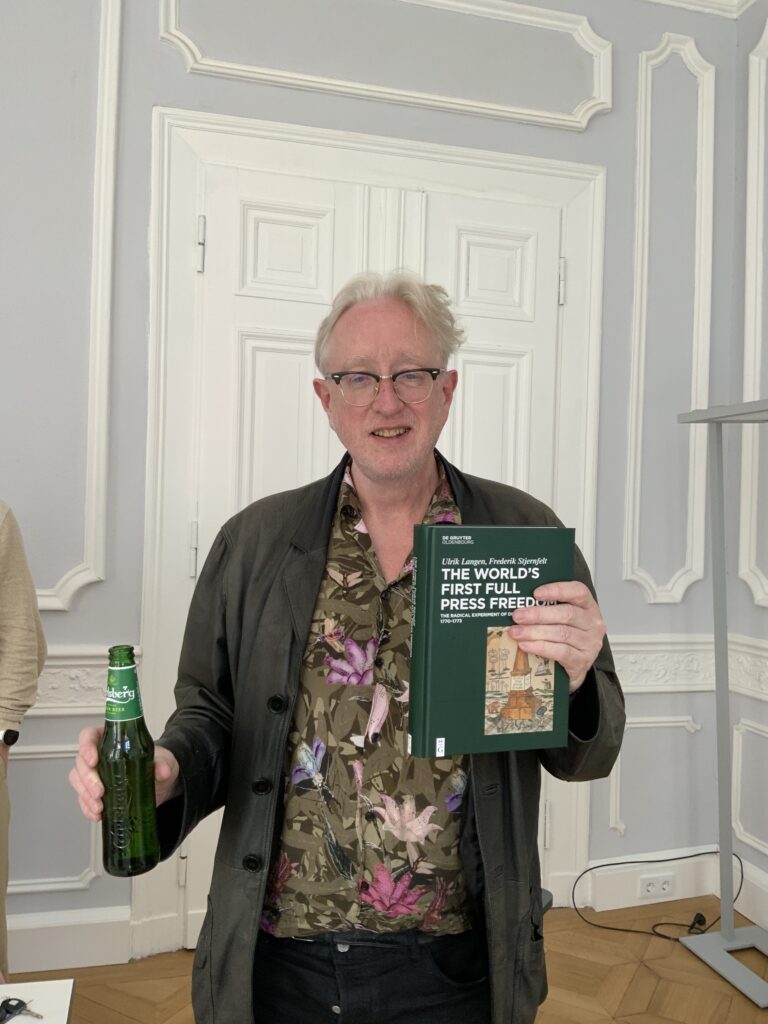
Are we there yet, are we there yet?

At his talk, part of the Philosophy of AI: Optimistic and Pessimistic Views, Professor Kim Guldstrand Larsen reflected on how far (or near) are we from developing fully autonomous cars. This is a priority challenge for explainable and verifiable machine learning. The question is not easy to answer directly. One certainty, though, is that the answer lies in the cooperation, or lack thereof, between academia and political agents (municipalities). The mediating agent, which, none of these two seem to favour, stems from industry: what can commercial companies deliver to improve traffic? Companies seem to speak both the language of research and of politics. How much will we smartify traffic in the next, say, 10 years? The question translates, as Professor Ana Bazzan asked simply, “What will companies do”?
What companies do, in this regard, will impact not only policy but also academia. Success in delivering smart solutions for traffic is expected to guide curriculum development in computer science programs. For example, the commerical solutions will focus teaching on either neural networks, Bayesian networks or automata based models.

Living in a Loop
Last semester in our Lecture Series, our Fellow Joffrey Becker gave a talk on Humans, Machines, and Anthropology of Cybernetic Pracitces where he also screened parts of a visual ethnography study that he conducted at a dairy farm. At the upcoming conference “Anthropology, AI and the Future of Human Society”, organized by the Royal Anthropological Institute of Great Britain and Ireland, Joffrey will dive deeper into the routines of a robotic dairy farm from an anthropological point of view. Tune in to this virtual event on June, 6th to 10th, 2022 if you want to learn more about what Anthropologists think about the Future of Human-Machine interactions.
Digital justice for all… and letters: Jean Lassègue on Space, Literacy and Citizenship
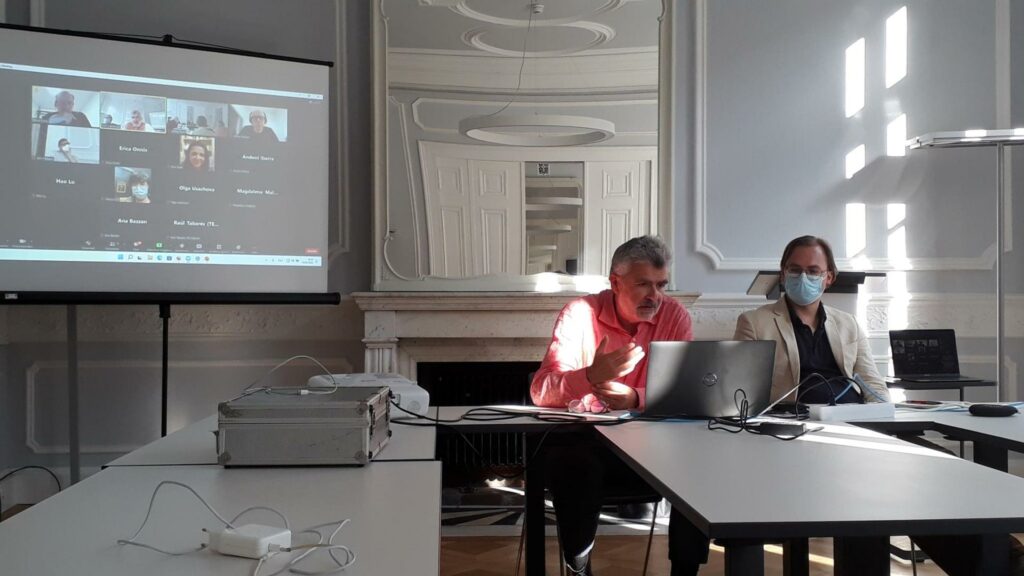
Part of the c:or/e Philosophy of AI: Optimis and Pessimist Views, Jean Lassègue’s talk showed that (digital) literacy is intrinsic to digital justice. His minute comparison of the modern notion of justice and what digital justice may be suggests that, aside many compatibilities and ways in which digital technology can help juridic processes, there is one point of divergence. Namely, this is the despatialization implied by digitalization. In appearance, digital media takes human societies onto despatialized virtual media. However, through an encompassing and thoughtful historical investigation, Jean Lassègue traces the long (cultural) process of despatialization all the way to the emergence of the alphabet as a dominating means of social representation in the West. The alphabet is the beginning of the social practice of “scanning”, eventually fostering computation. In light of this long historical process, questions on digital justice invite the problematization of digital literacy, spatialization and, we would add, embodiment.
“… should be about the people” (Ana Bazzan)

As part of the Philosophy of AI: Optimist and Pessimist Views c:o/re lecture series, Ana Bazzan delivered a very rich talk on “Traffic as a Socio-Technical System: Opportunities for AI“. It is beyond the scope of this entry to cover all arguments advanced in this talk. Here, we reflect on one matter that we find particularly interesting and inspiring. Namely, two interrelated central ideas in this talk are human-centredness in engineering and the network structuring of human societies. Ana Bazzan’s work contributes to understanding newly emerging social networks, in their many dimensions, and to usher the smart city by engineering and designing traffic as a socio-technical system.
Ana Bazzan highlighted the importance of mobility for equality, in many senses of these two words. Simplifying, a transportation system that facilitates mobility is congruent with democratic and transparent institutions. This realization comes from a user experience manner of thinking or, more broadly, placing the human at the centre of engineering. Stating that traffic and, in general, engineering “should be about the people”, Ana Bazzan further asked: “How to mitigate traffic problems by means of human-centered modeling, simulation, and control?” This question echoes the rationale of the environmental humanities, as posited by Sverker Sörlin (2012: 788), that “We cannot dream of sustainability unless we start to pay more attention to the human agents of the planetary pressure that environmental experts are masters at measuring but that they seem unable to prevent.” It is highly insightful that many sciences find ways for progress by reflecting on human matters. It may pass unnoticed, as a detail, but very different problematizations stem from thinking of either technical or socio-technical solutions for, say, traffic. The endeavour of engineering solutions in awareness of social and cultural context is typical of “the creative economy”, being ripe with a creative conflict, as emerging from “where culture clashes most noisily with economics.” (Hartley 2015, p. 80)
In this interrogation, Ana Bazzan referred to Wellington’s argument that we are now in a century of cities, as opposed to the last century, which was a century of nation states. Indeed, research from various angles shows that digitalization transcends the borders, as imagined through print (Anderson 2006 [1983]), of nation-states. In a similar vein, defining industrial revolutions as the merging of energy resources with communication systems, Jeremy Rifkin (2011) argues that to achieve sustainability, it is necessary to merge renewable energy grids with digital communication networks. This would result in overcoming the dependence on the merger of motorways, powered by fossil fuels, and broadcasting.
Particularly through reinforced learning, digital technology and AI are the instruments of the transition towards smart cities. Smart cities do not merely span over a geographical territory but are better identified as (social) networks. They are incarnate in traffic. Ana Bazzan also insists that broadcasting the same information about traffic to all participants to traffic is not useful. Drivers exhibit a rational behavior, according to pragmatic purposes. More than simply targeting pragmatically useful information to specific drivers, a smart traffic system or, better, a smart city is constituted by multiagent systems, not a centralized and unidirectional top-down transmission of information. As such, while not broadcasting uniformly, this approach is, actually, anti-individualistic. It makes evident the benefits, particularly, the cumulative rewards, of seeking solutions in light of people’s shared and concrete necessities. To apprehend these networks and serve the needs of their actants, Ana Bazzan advocates a decentralized, bottom-up approach. Indeed, this is a characteristic of ‘network thinking’ (Hartley 2015). The resulting networks render obsolete previously imagined community boundaries, revealing, instead, the real problems of people as they find themselves in socioeconomic contexts. The city is these networks and it becomes according to how they are engineered.
References
Anderson, Benedict. 2006 [1983]. Imagined communities: Reflections on the origin and spread of nationalism. London: Verso.
Hartley, John. Urban semiosis: Creative industries and the clash of systems.
Rifkin, Jeremy. 2011. The Third Industrial Revolution: How lateral power is transforming energy, the economy, and the world. New York: Pallgrave Macmillan.
Sörlin, Sverker. 2012. Environmental humanities: why should biologists interested in the environment take the humanities seriously? BioScience 62(9): 788-789.
“… they call me a free speech fundamentalist” (Frederik Stjernfelt)
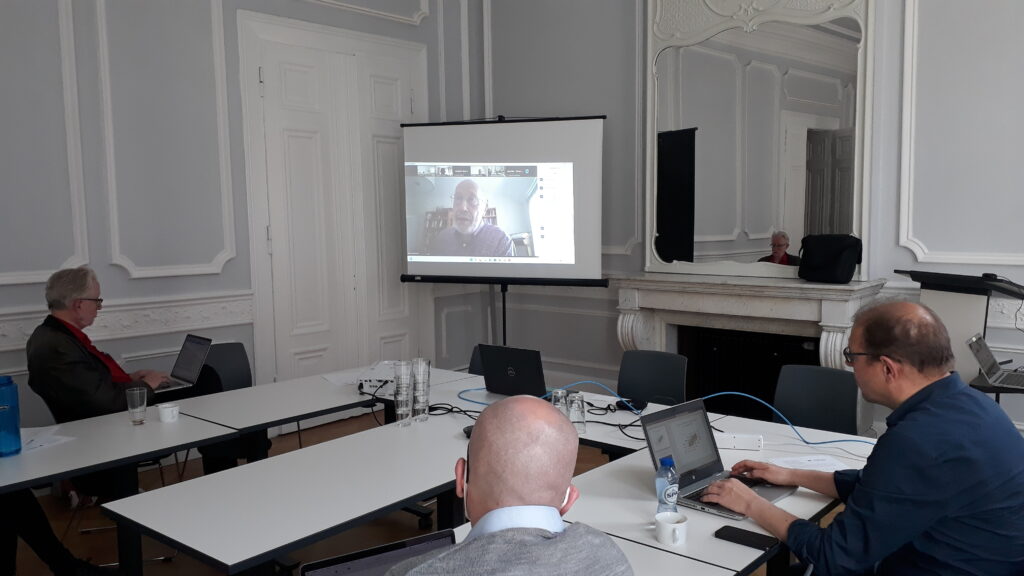
The immediately obvious insight that the Enlightenment now workshop, organized by Frederik Stjernfelt and Steve Fuller at c:o/re (21.04.2022), provided is that the Enlightenment was as complex and historically eclectic as its approaches in intellectual history are. Not only was consensus difficult to find in the rich discussions that the workshop generated, but it felt that each talk was a world of its own. Yet, at the same time, all speakers discussed the Enlightenment in a distinctively recognizable way. Frederik Stjernfelt historically unfurled the first case of full press freedom. Jonathan Israel scholarly discussed Spinoza’s role in ushering the Enlightenment. Observing two contrasted tendencies in the long history of Western philosophy, Rens Bod remarked that “the exceptional can not exist without patterns”. Steve Fuller shared his ideas for understanding modernity by writing theatre plays. Pondering on the contemporary social conditions, Cheryce von Xylander observed that a common interest of these approaches on the Enlightenment is how cognition is imagined.
An uninterrupted thread that the workshop arguable followed is the concern of the Enlightenment to ‘fix’ how it upset the assumptions of Western metaphysics. Why, though? It seems that to this day, cultural taboos still bear on what philosophical and scientific inquiry can (or rather, may) pursue unhindered, without upsetting public opinions. “In Denmark they call me a free speech fundamentalist,” said Frederik Stjernfelt, while also remarking that free press does not come with benefits only, as we can clearly see in post-truth attitudes.
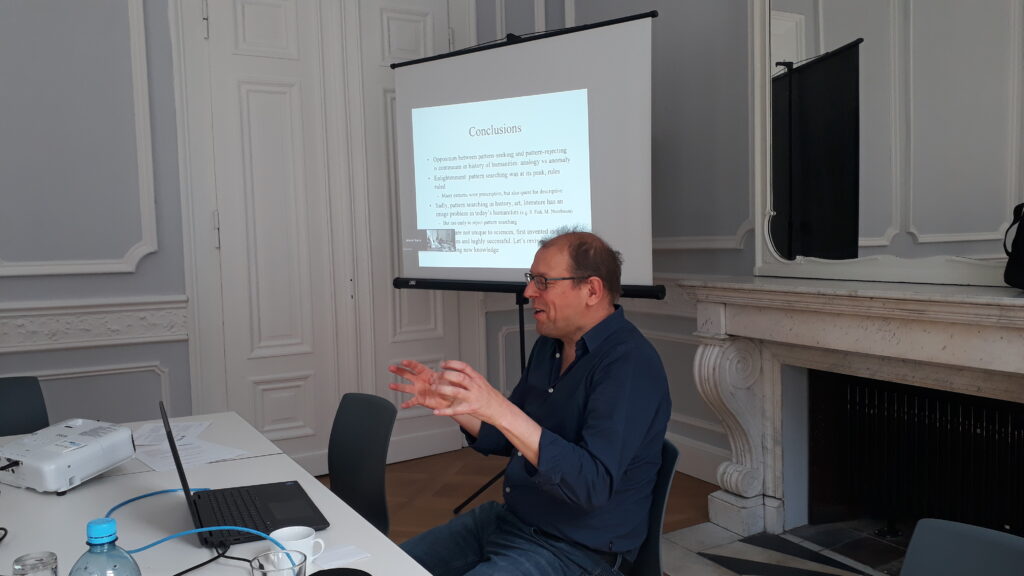
Technologically enlightened: Interdisciplinary research in robotics or the privilege of being messy
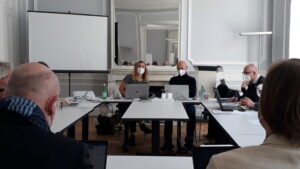
Today’s c:o/re workshop on Interdisciplinary Research in Robotics and AI, organized by Joffrey Becker, insightfully showcased the mutual relevance between scientific and market research, particularly in the concern of design. It convincingly posited that materiality and physical properties are intrinsic to learning. The talks by Samuel Bianchini, Hugo Scurto and Elena Tosi Brandi showed that learning is a matter of designing. We do not make stuff out of nothing. Elena Tosi Brandi explained that “when you design behaviors, you have to put an object in an environment, a context.” Humans appear to notice this by interacting with robots. For example, machine learning processes offer opportunities for humans to reflect on their own learning. Animated (digital) objects acting independently from humans and thus, arguably, having agency, in so many words, make us wonder. Observing relations between software, bodies and non-organic matter places humans in a new position to understand how materiality is intrinsic to knowledge. Director of c:o/re, Stefan Böschen noted that experimental research on robotics is often open-ended, aiming to stimulate innovation in a “what may be” interrogation. To this, Hugo Scurto shared that for him “it is a privilege to be able to do research in a messy way”
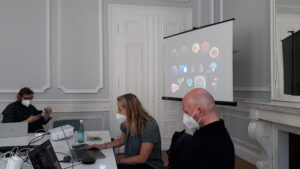
The consideration of the epistemic qualities of material properties urges the reconsideration of Western modern philosophy, which we shall dive into in tomorrow’s workshop, Enlightenment Now, hosted by Steve Fuller and Frederik Stjernfelt. As Steve Fuller already remarked, listening to Elena Tosi Brandi’s work on design, it is possible “that machines and humans might both improve their autonomy through increased interaction. But this will depend on both machines and humans being able to learn in a sufficiently ‘free’ way, regardless of what that means.” If Hume woke up Kant from the dogmatic slumber, it seems that robots can wake us up some more.

